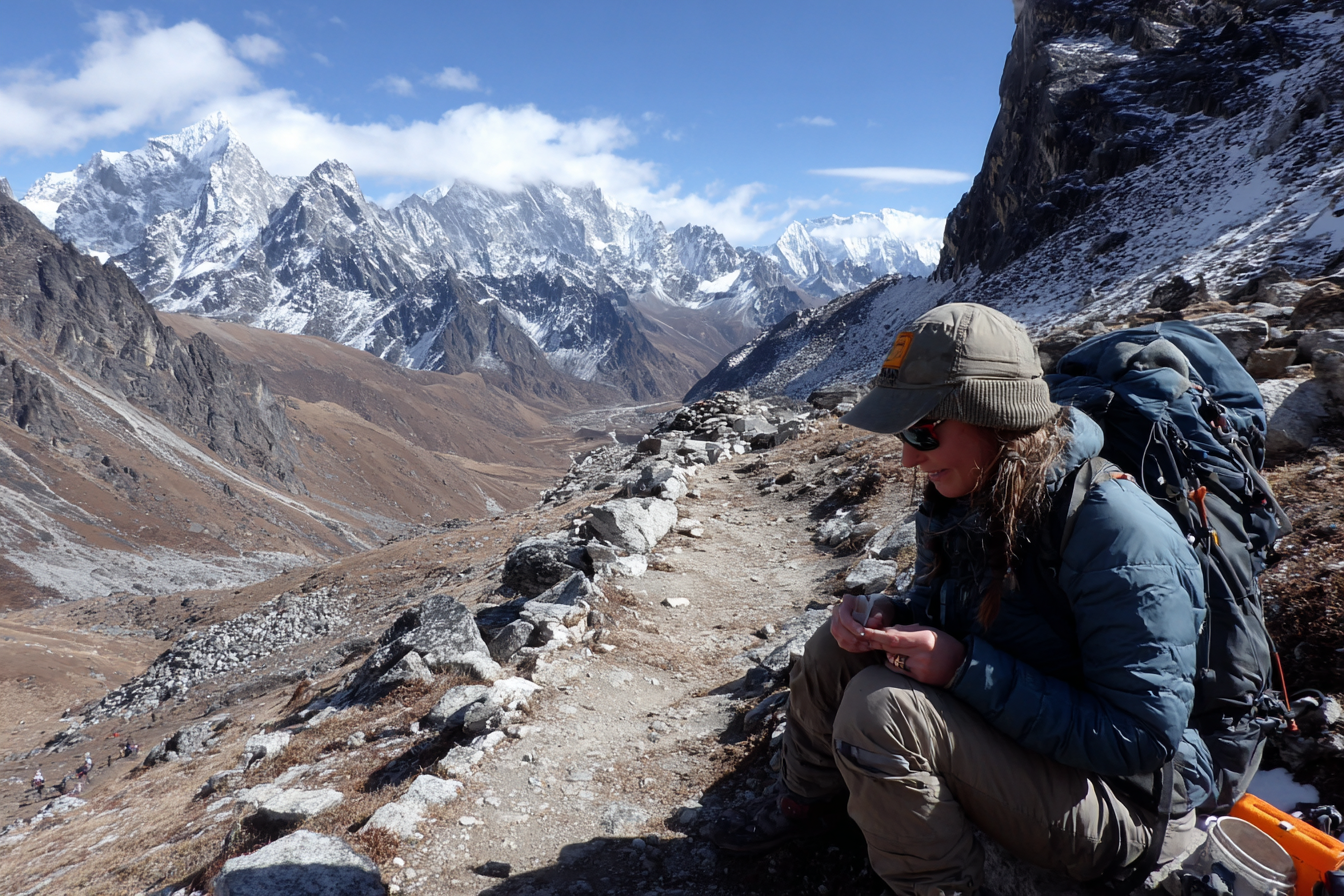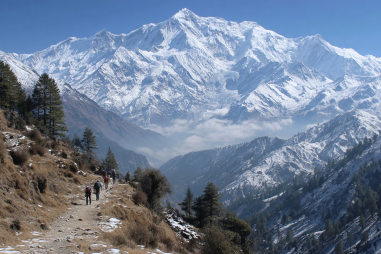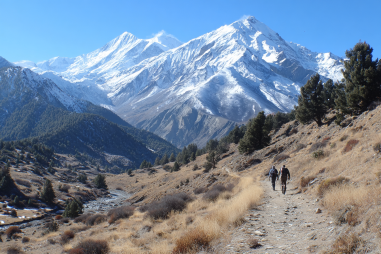Trekking to Everest Base Camp is a thrilling adventure that attracts thousands of trekkers from around the world each year. The magnificent Himalayan scenery, the cultural richness of the local Sherpa communities, and the personal challenge of reaching such an iconic spot all combine to make it an unforgettable experience. However, this trek involves significant physical demands and exposure to harsh environmental conditions at high altitudes. Ensuring your health and safety throughout the journey is crucial to making your trek successful and enjoyable. In this article, we’ll share vital tips on how to stay healthy, prevent common illnesses, and handle emergencies when trekking to Everest Base Camp.
Common Health Risks on the Trek
The Everest Base Camp trek presents several common health risks that trekkers need to be aware of before and during their journey. The most significant challenge stems from altitude sickness, but other health issues such as dehydration, injuries, and infections can also occur.
Altitude sickness, also known as Acute Mountain Sickness (AMS), occurs due to the lower oxygen levels at high elevations. Symptoms include headaches, nausea, dizziness, fatigue, and difficulty sleeping. In severe cases, it can develop into High Altitude Pulmonary Edema (HAPE) or High Altitude Cerebral Edema (HACE), both of which are life-threatening and require immediate descent and medical treatment.
Besides altitude concerns, trekkers can face dehydration and nutritional deficiencies if they don’t consume enough fluids or balanced meals. Physical strain can lead to muscle soreness, joint pain, or blisters from improper footwear. Additionally, minor injuries, such as cuts and scrapes or infections from contaminated water or food, are possible along the trail.
Preventing Altitude-Related Illnesses
Proper acclimatization is the key to preventing altitude sickness on the Everest Base Camp trek. The body needs time to adjust to decreasing oxygen levels as you ascend.
Some important strategies include:
- Ascend gradually: Avoid rapid ascents by following a well-paced itinerary that allows rest days and gradual altitude gain. Typically, it’s recommended not to increase your sleeping altitude by more than 300 to 500 meters per day above 3,000 meters.
- Stay hydrated: Drinking ample water helps your body acclimate better and reduces symptoms of altitude sickness.
- Listen to your body: If you experience symptoms of AMS, stop ascending and rest until they improve. If symptoms worsen or severe signs of HAPE or HACE appear, descending immediately is essential.
- Medication: Consult a doctor about prophylactic medications such as acetazolamide (Diamox), which can help accelerate acclimatization. Never self-medicate without professional advice.
- Avoid alcohol and smoking: These habits can impair acclimatization and dehydration status, increasing the risk of altitude sickness.
Hydration, Nutrition, and Fitness Advice
Maintaining good hydration and nutrition is crucial for energy and recovery on long trekking days. Due to increased respiration and physical exertion, your body requires more fluids than usual.
- Hydrate regularly: Aim for at least 3-4 liters of water daily. Use water purification tablets or filters if relying on natural sources.
- Balanced diet: Eat carbohydrate-rich meals to sustain energy. Include proteins for muscle repair and fats for long-lasting energy.
- Snacks: Carry high-energy snacks like nuts, dried fruits, energy bars, and electrolyte powders to replenish salts and minerals lost through sweat.
- Fitness preparation: Prior to the trek, build endurance, strength, and cardiovascular fitness through hiking, walking, and aerobic exercises. Training reduces fatigue and decreases injury risk on the trail.
Equipment and Clothing for Safety
Having the right gear is essential for health and safety while trekking in the high-altitude Himalayan environment. Temperatures can vary dramatically, and weather conditions may change rapidly.
- Layered clothing: Use moisture-wicking base layers, insulating mid-layers, and a waterproof outer shell. This system allows you to regulate body temperature efficiently.
- Proper footwear: Invest in sturdy, waterproof trekking boots with good ankle support and a reliable grip to prevent slips and blisters.
- Sun protection: UV rays are stronger at altitude. Bring a hat, sunglasses with UV protection, and use sunscreen liberally.
- Trekking poles: These reduce stress on knees and provide stability over rocky or slippery terrain.
- First aid kit: Carry supplies like blister treatment, bandages, antiseptic, pain relievers, and any personal medications.
- Water purification: Have means to purify water, such as portable filters or purification tablets, to avoid waterborne illnesses.
Emergency Plans and Medical Facilities
Despite careful planning, emergencies can occur. It’s important to have a well-thought-out plan in place before heading onto the trail.
While trekking in the Everest region, you’ll find several medical clinics in villages along the route, such as Namche Bazaar, Pheriche, and Gorak Shep. These clinics can handle minor injuries and altitude sickness cases but may become overcrowded during peak seasons. For serious conditions like HAPE or HACE, helicopter evacuation is the fastest and safest option.
Before your trek, inform your trekking guide and agency about your emergency plans. They typically have protocols for rescues and will know how to coordinate evacuations when necessary.
Carry a fully charged mobile phone or a satellite phone where coverage is spotty. Emergency numbers for rescue services and nearby clinics should be memorized or saved for quick access.
Insurance Recommendations
Travel and trekking insurance are must-haves for Everest Base Camp adventures. Given the risks associated with high altitude trekking and potential helicopter evacuations, comprehensive insurance coverage is critical.
- Medical coverage: Ensure your insurance covers illnesses, injuries, and hospitalization abroad.
- Emergency evacuation: A policy should include emergency helicopter evacuation benefits, which can be extremely costly but life-saving.
- Trip cancellation and interruption: Sometimes unexpected events, such as weather or political instability, can disrupt your itinerary. Insurance can help recover financial losses.
- Check exclusions: Read the fine print to ensure high-altitude trekking (up to 5,500 meters and above) is included.
Mental Health Considerations
While physical preparation for Everest Base Camp trekking is widely emphasized, mental health and emotional resilience are equally important. Isolation, physical exhaustion, and the challenging environment can affect your mindset during the trek.
Some tips for maintaining mental well-being include:
- Set realistic expectations: Understand the difficulty and unpredictability of the trek. Flexibility in plans reduces frustration.
- Stay connected: Keep in touch with fellow trekkers and guides. Sharing experiences helps lift spirits.
- Practice mindfulness: Take moments to appreciate the scenery and the trek’s rewarding nature.
- Manage stress: Use deep breathing techniques or light stretching to combat anxiety and physical tension.
- Rest adequately: Proper sleep and downtime ensure better mood and cognitive function.
Trekking Responsibly and Safely
Trekking to Everest Base Camp is a remarkable achievement but requires respect for your health and safety. By understanding potential risks, preparing your body and mind, packing the right gear, and having emergency plans and insurance in place, you can significantly reduce hazards along the way.
A responsible trekker is informed, cautious, and appreciative of the environment and local culture. Take your time to acclimatize, listen to your body’s signals, and seek medical attention when needed. With these health and safety tips, your Everest Base Camp trek can be both a safe and deeply rewarding experience.







